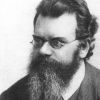10 Relativity Books Renowned Experts Trust for Deep Insight
Explore Relativity Books recommended by Kirk Borne, Reinhard Genzel, Sean Carroll, and others to accelerate your physics mastery



What if the fabric of space and time is more astonishing than you ever imagined? Relativity, a cornerstone of modern physics, reshapes how we understand the universe—from black holes to the very nature of gravity. Its concepts challenge intuition but unlock mysteries that have fascinated scientists for over a century.
Leading figures like Kirk Borne, a principal data scientist and astrophysicist, emphasize the enduring importance of foundational texts such as "Gravitation," which bridges Newtonian ideas with Einstein's revolutionary insights. Reinhard Genzel, Nobel laureate and Max Planck Institute director, highlights Bernard Schutz's work for illuminating the mathematics behind curved spacetime, especially as recent astronomical discoveries turn theory into precise science. Meanwhile, Sean Carroll, a Caltech physicist, praises Carlo Rovelli's concise explorations for revealing the elegant beauty in general relativity’s core.
While these expert-curated books provide proven frameworks, readers seeking content tailored to their specific background, skill level, or focus area might consider creating a personalized Relativity book that builds on these insights, accelerating your journey through this profound field.
Recommended by Kirk Borne
Principal Data Scientist, PhD Astrophysicist
“#Gravity is the only one of the four fundamental forces of #Physics that doesn’t (yet) have a quantum explanation — learn how our understanding of Gravity has evolved, from Newton’s great insight to Einstein’s: 👇See this gravitationally heavy 3-kg book👇” (from X)
by Charles W. Misner, Kip S. Thorne, John Archibald Wheeler, David I. Kaiser··You?
by Charles W. Misner, Kip S. Thorne, John Archibald Wheeler, David I. Kaiser··You?
Drawing from the combined expertise of seasoned physicists Charles W. Misner, Kip S. Thorne, John Archibald Wheeler, and David I. Kaiser, this textbook offers a rigorous exploration of Einstein's general theory of relativity. You’ll gain a solid grasp of the laws governing flat and curved spacetime and learn to calculate physical phenomena using modern geometric tools. The book breaks down complex concepts like black holes, gravitational waves, and cosmology through a dual-track approach that suits both semester-length graduate courses and deeper study. It's especially suited for advanced students and researchers who want a thorough understanding of gravitation’s physical and mathematical foundations without distractions.
Recommended by Reinhard Genzel
Nobel laureate, Max Planck Institute director
“Several generations of students have benefitted from the first two editions of Professor Bernard Schutz’ beautiful introductory textbook on tensor algebra, manifolds, physics in curved space times, and Einstein’s field equations. Why another edition now? The answer is that, in the last years, precision measurements of stellar orbits around the central massive black hole in the Galactic Center, the detection of gravitational waves from in-spiraling binary black holes and neutron stars with LIGO, and the detection of the central ‘radio wave shadow’ of the supermassive black hole in the galaxy M87 have suddenly opened the magical world of strongly curved spacetime to precision experimental tests. These experiments and much more to come from ground- and space-based gravitational wave studies have started a renaissance of interest in Einstein’s theory.” (from Amazon)
by Bernard Schutz··You?
by Bernard Schutz··You?
Drawing from his extensive career at Cardiff University and the Max Planck Institute, Bernard Schutz crafts a clear and rigorous introduction to general relativity tailored for advanced undergraduates with minimal math backgrounds. You’ll explore fundamental concepts like tensor algebra and Einstein’s field equations, alongside contemporary astrophysical phenomena such as black holes, pulsars, and gravitational waves, supported by over 300 exercises to build your confidence. Schutz’s informal style and worked examples make the dense subject approachable without oversimplifying. If you’re aiming to grasp the mathematical and physical foundations behind modern cosmology and gravitational experiments, this book offers a solid first step, though it demands commitment to master the material.
by TailoredRead AI·
This tailored book explores Einstein’s relativity and its mathematical foundations with a personalized focus that aligns with your background and goals. It examines core concepts from special and general relativity, emphasizing the mathematical structures that underpin space-time, curvature, and gravitational phenomena. The book reveals how these theories reshape our understanding of the universe through a clear, focused presentation matched to your interests. By addressing your specific questions and skill level, it provides a pathway to mastering complex ideas without unnecessary detours. This personalized approach synthesizes the collective knowledge of relativity in a way that fits your learning style, making advanced physics both accessible and engaging.
Recommended by Sean Carroll
Caltech physicist and author
“General relativity is the most beautiful physical theory we have, and plays an increasingly central role in modern physics. Carlo Rovelli’s introduction is both concise and comprehensive, written by a master of exposition as well as of the material. I envy anyone encountering these ideas for the first time.” (from Amazon)
by Carlo Rovelli··You?
by Carlo Rovelli··You?
Drawing from his extensive background as a leading theoretical physicist and one of the pioneers of Loop Quantum Gravity, Carlo Rovelli offers a focused introduction to Einstein's General Relativity that steers clear of unnecessary complexity. You’ll explore the core principles behind gravity, black holes, and gravitational waves with clarity, grounded in both physical intuition and mathematical rigor, especially in chapters dedicated to cosmology and quantum gravity. This book suits those who want a deeper grasp beyond popular accounts—whether you’re a university student or a science enthusiast eager to understand the theory’s foundational concepts and philosophical implications. Rovelli's concise approach makes dense material accessible without sacrificing depth.
Recommended by Sean Carroll
Caltech physicist; Author of Spacetime and Geometry
“It is a pleasure to read Sidney Coleman’s Lectures on Relativity, characterized as one would expect by exceptional clarity and insight. They are surprisingly modern, to boot, including discussions of black holes and cosmology. Any fan of relativity would benefit from reading them.” (from Amazon)
by David J. Griffiths, David Derbes, Richard B. Sohn··You?
by David J. Griffiths, David Derbes, Richard B. Sohn··You?
Sidney Coleman's Lectures on Relativity draws from the legendary physicist’s Harvard courses in the 1960s, compiled by his students and editors David J. Griffiths, David Derbes, and Richard B. Sohn. You’ll find detailed explorations of both special and general relativity, including modern topics like black holes and cosmology, reflecting Coleman's deep insights from decades of particle physics research. This book sharpens your understanding of relativistic frameworks through lucid explanations and challenging problems, making it especially suited for graduate students and professionals aiming to deepen their grasp of theoretical physics. If you want a direct link to one of the 20th century's great minds in physics, this is your guide.
Recommended by John Mather
Nobel Prize in Physics winner
“Cowen is a gifted science writer and storyteller, and the story is amazing!” (from Amazon)
Ron Cowen's decades of science writing experience shine through as he traces the century-long journey that cemented Einstein's general theory of relativity as a cornerstone of physics. You'll follow the pivotal 1919 eclipse observation that confirmed gravity bends light, and explore how modern initiatives like the Event Horizon Telescope probe black holes to push the boundaries of our understanding. The book breaks down complex ideas such as spacetime curvature and quantum gravity in approachable language, making it accessible if you have a curiosity about astrophysics. If you want a clear narrative connecting historical experiments to cutting-edge research, this book offers that perspective without oversimplification.
by TailoredRead AI·
This tailored book explores relativity by offering a personalized pathway that deepens your physics intuition and problem-solving skills over 30 focused days. It covers core principles of special and general relativity, emphasizing hands-on exercises designed to strengthen your understanding through active engagement. By matching your background and specific goals, it reveals complex concepts in a way that resonates with your unique learning style and interests. This tailored approach helps you bridge expert knowledge with practical application, enabling you to internalize challenging material and build confidence in tackling relativity problems effectively.
by Norman Gray··You?
by Norman Gray··You?
Norman Gray, a research fellow at the University of Glasgow with decades of teaching experience in general relativity, crafted this guide to clarify the essentials without overwhelming you. The book focuses on core concepts like differential geometry and Einstein's equations, balancing necessary technical detail with clear physical intuition. You’ll find worked examples and problems that reinforce understanding, especially useful if you're transitioning from special relativity to the complexities of general relativity. This text suits students who want a focused yet rigorous companion to more expansive textbooks, or anyone needing a solid refresher on fundamental topics.
Recommended by Paul Davies
Physicist, science communicator, author
“This is a brilliant book. Dray has an extraordinary knack of conveying the key mathematics and concepts with an elegant economy that rivals the expositions of the legendary Paul Dirac. It is pure pleasure to see far-reaching results emerge effortlessly from easy-to-follow arguments, and for simple examples to morph into generalizations. It is so refreshing to find a book that does not obscure the basics with unnecessary technicalities, yet can develop sophisticated formalism from very modest mathematical investments.” (from Amazon)
by Tevian Dray··You?
by Tevian Dray··You?
When Tevian Dray first discovered the power of differential forms in explaining general relativity, he found a way to simplify a notoriously complex subject. His book guides you through the essentials of relativity using minimal prerequisites—just calculus and linear algebra—making the geometry behind gravity accessible without drowning in tensor calculus. You’ll explore how curvature is described geometrically, gaining insight into black holes and cosmological models through clear, intuitive arguments rather than heavy formalism. This book suits advanced undergraduates or graduate students who want a fresh perspective on relativity’s mathematical backbone without sacrificing rigor.
by Seth Fletcher··You?
After five years of close observation, Seth Fletcher delivers an intimate chronicle of the Event Horizon Telescope team’s struggle to photograph a black hole, a feat that tests Einstein’s theory of relativity at its limits. You’ll gain insight into the collaborative scientific process behind this massive endeavor, including the technical challenges of assembling a virtual Earth-sized observatory and the human dynamics that fueled breakthroughs. Fletcher also weaves accessible explanations of black hole physics and relativity, making complex concepts tangible through vivid narrative and detailed profiles. If you’re fascinated by astrophysics or the quest to decode the universe’s most enigmatic phenomena, this book offers a grounded yet thrilling perspective.
Recommended by Publisher's Weekly
“As Fermi Lab astrophysicist Hooper tells readers, the mass in any solid object, like a chair or a table, makes up only about 4% of the universe. The other 96% of the cosmos consists of invisible 'dark matter' and 'dark energy.' Scientists have known about dark matter for a long time; some minigalaxies are composed almost entirely of the stuff. Dark energy is a more recent discovery: it's what seems to be pushing the universe apart faster and faster. Hooper explains why he and his colleagues have ruled out many leading candidates for the constituent particles of dark matter, like neutrinos. Today they are betting on particles called superpartners that bear Seussian names like sneutrinos, zinos and Higgsinos. Some researchers believe the missing mass may just be ordinary matter moving through the extra dimensions posited by string theory. Dark energy, which accounts for two-thirds of the energy in the universe, presents even more of a mystery. According to the author, some scientists have theorized that multiple universes may play a role. Hooper's clear presentation in very simple, jargon-free prose should appeal especially to young people just starting to get excited about the mysteries that still await them in science. (Nov. 1)” (from Amazon)
Dan Hooper's decades of experience as a particle physicist at Fermi National Accelerator Laboratory led him to write this accessible exploration of the universe's unseen components. You’ll learn about dark matter and dark energy in a way that connects complex physics with the latest scientific discoveries, including why visible matter accounts for only a tiny fraction of the cosmos. Chapters detail the candidates for dark matter particles, like sneutrinos and Higgsinos, and discuss theories involving extra dimensions and multiple universes. This book suits anyone curious about the mysteries of cosmology, especially those new to astrophysics seeking clear explanations without heavy jargon.
by T.M. Helliwell··You?
by T.M. Helliwell··You?
Thomas M. Helliwell, a seasoned physicist with a rich academic background from Caltech and Harvey Mudd College, crafted this book to deepen your physical intuition about special relativity before delving into its mathematical framework. You’ll explore key 20th-century physics revolutions through clear explanations, numerous examples, and practical problems that solidify your understanding. The book’s ten appendices and illustrations provide extra clarity on complex topics, making it particularly suited for those eager to grasp both conceptual and computational aspects of special relativity. If you want to move beyond superficial understanding and truly engage with the subject’s nuances, this is a solid choice.
Get Your Custom Relativity Guide in 10 Minutes ✨
Stop sifting through generic texts. Get targeted Relativity strategies that fit your unique focus and level.
Trusted by physicists and astrophysicists worldwide
Conclusion
This collection reveals three clear themes: the mathematical rigor underpinning relativity, the evolving experimental confirmations that bring Einstein’s theories to life, and the human stories of discovery and perseverance behind the science. If you’re grappling with the abstract mathematics, start with Schutz’s "A First Course in General Relativity" for structured guidance. Those fascinated by astrophysical applications will find "Einstein's Shadow" and "Gravity’s Century" captivating companions.
For rapid advancement, pairing "Gravitation" with Dray’s geometric approach offers a powerful blend of depth and clarity. Alternatively, you can create a personalized Relativity book to bridge the gap between general principles and your specific situation, ensuring the right balance of theory and application.
These books can help you accelerate your learning journey into one of physics’ most fascinating areas—where space, time, and gravity converge in ways that continue to reshape our understanding of the cosmos.
Frequently Asked Questions
I'm overwhelmed by choice – which book should I start with?
Start with Bernard Schutz’s "A First Course in General Relativity." It balances accessibility and rigor, guiding you through core concepts and math, ideal for building a strong foundation.
Are these books too advanced for someone new to Relativity?
Some texts like "Gravitation" are advanced, but others, such as "A Student's Guide to General Relativity," offer clear explanations suited for beginners transitioning from special relativity.
What’s the best order to read these books?
Begin with introductory guides like Schutz or Gray’s student guide, then explore specialized texts like Rovelli’s and Dray’s for conceptual depth, and finally, narratives like "Gravity’s Century" for context.
Should I start with the newest book or a classic?
A mix works best. Classics like "Gravitation" are foundational, while newer works like Rovelli’s provide fresh perspectives. Combining both enriches understanding.
Which books focus more on theory vs. practical application?
"Sidney Coleman's Lectures" and "Differential Forms and the Geometry of General Relativity" emphasize theory, while "Einstein's Shadow" and "Gravity’s Century" connect theory with observational breakthroughs.
Can personalized books complement these expert texts?
Yes! While these expert books cover core principles, personalized books tailor content to your background and goals, bridging theory with your unique learning path. Explore custom Relativity books for focused insights.
📚 Love this book list?
Help fellow book lovers discover great books, share this curated list with others!
Related Articles You May Like
Explore more curated book recommendations









